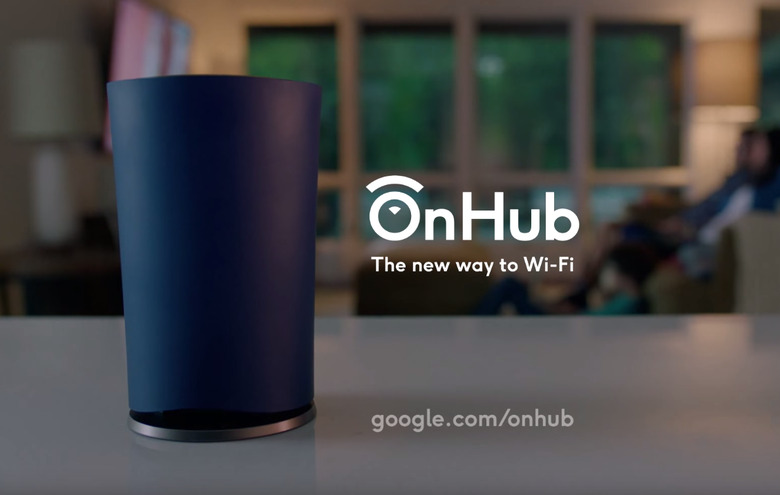The 9 Coolest Features Of Google's OnHub Router
With its new $200 OnHub router, Google is trying to make a previously ignored and boring corner of tech gadgetry interesting for the first time. Not only does Google's OnHub router look stylish, it looks stylish in a category ordinarily filled with clunky hardware that not surprisingly winds up on the floor, tucked away from view.
Aesthetics aside, the OnHub router delivers an unparalleled selection of router-oriented services that most consumers have never enjoyed previously. While that may admittedly sound boring at first glance, the real world implications of the OnHub router are impressive and compelling.
DON'T MISS: Is this the man who hacked Ashley Madison?
While the OnHub's design should help with overall Wi-Fi signal strength, the device's real magic comes in the form of an accompanying iOS/Android app. Below is a quick run down of some of the OnHub's cooler features.
- The OnHub router comes with a Google designed antenna system which, when coupled with Google's software, can dynamically adjust pertinent router settings as to keep interference to a minimum.
- The router allows you to prioritize one device over another. In other words, if you want to ensure that the Netflix stream on your laptop gets more bandwidth love than, say, a nearby iOS device downloading a few updates, you can make that happen.
- You can say goodbye to toggling router settings the old fashioned way. Google OnHub's companion mobile app gives you complete control over your router settings directly from your smartphone. Need to reset your router? It's as easy as opening up the app.
- The companion mobile app will also keep an eye on the state of your network, let you perform various network tests, and even suggest solutions to network hiccups as they arise.
- Want to share your Wi-Fi password with a friend? The OnHub mobile app makes it a breeze. Simply tapping on a "reveal password" button will make your Wi-Fi network more easily accessible to people you want to share it with.
- Google OnHub makes it easy to not only tell how many devices are on your network at any given time, but to also discern how much data is being used by each device.
- First noted by The Verge, the companion app can also perform speed tests and subsequently provide "real-life examples of what types of internet activities are optimal, like 'You can stream Ultra HD video at this speed.'" This should be especially useful for the majority of Internet users who aren't likely to be well-versed in all things Mbps.
- Hardware wise, the OnHub router comes with an array of 13 different antennas, each positioned 120 degrees apart. This ensures that the signal is spread out uniformly in as many directions as possible. On a related note, Yousef Shanawany adds the following nugget of insight: "According to Matt Cutts, who was a guest speaker on this week's This Week in Google, the last of the 13 antennas in the OnHub is used to switch the outgoing signal to the best channel it can sense in the air every five minutes, whereas regular routers sense the best channel only when the router first turns on, and keeps that channel until the routers are reset.
- Not surprisingly, the OnHub router supports 802.11ac WiFi which can deliver speeds as fast as 1.3 gigabits per second along with wider coverage than earlier standards.
Priced at $200, the OnHub router certainly isn't cheap. Still, with the device selling out on the first day pre-orders opened up, it appears that end users are more than willing to pay a bit more in order to get a whole lot more.
